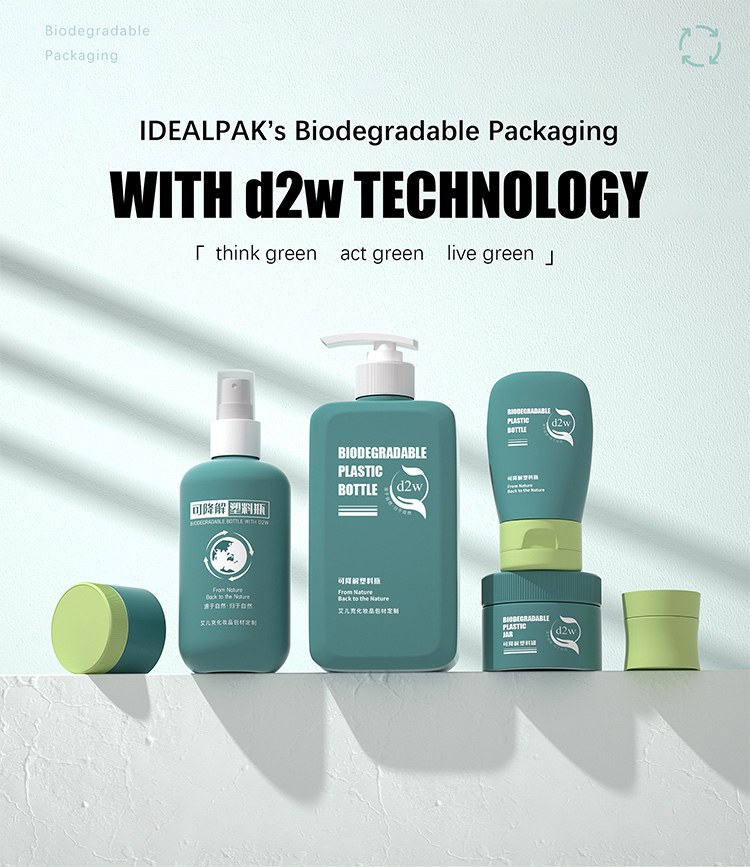Introduction
With growing concerns about sustainability and plastic waste, consumers are asking important questions about the packaging they use daily, including whether PET bottles (Polyethylene Terephthalate) are recyclable, reusable, or biodegradable. PET is a popular plastic material in industries like cosmetics, food, and beverages due to its lightweight, strong, and transparent properties. This blog will explore whether PET bottles are recyclable, reusable, biodegradable, and what PET bottles can be recycled into, helping you make more informed decisions about the products you use.
Are PET Bottles Recyclable?
Yes, PET bottles are highly recyclable. In fact, PET is one of the most widely recycled plastics globally. According to the PET Resin Association, PET bottles can be recycled through mechanical or chemical recycling processes. Here’s how the process works:
- Collection: PET bottles are collected from recycling bins, sorting facilities, or curbside programs.
- Sorting and Cleaning: Once collected, the bottles are sorted by color and cleaned to remove labels, adhesives, and any product residues.
- Shredding: The cleaned bottles are then shredded into small flakes.
- Reprocessing: These flakes are melted down and reprocessed into new PET materials, which can be used to create new bottles, containers, or even fibers for clothing.
One of the major advantages of recycling PET is that it retains its quality even after being recycled multiple times. According to the EPA (Environmental Protection Agency), recycling PET not only reduces the demand for raw petroleum-based resources but also minimizes the environmental impact of producing virgin plastics.
Are PET Bottles Reusable?
Yes, PET bottles can be reused for a variety of purposes. However, there are a few things to keep in mind:
- Single-Use Design: Many PET bottles are designed for single use, particularly those used for water and soda. While these bottles can technically be reused, over time they may degrade or absorb odors and flavors from previous contents.
- Cleaning and Safety: If you plan to reuse a PET bottle, it’s essential to clean it thoroughly between uses. Repeated use without proper cleaning can lead to bacterial growth, especially if the bottle is used for beverages or food products.
- Creative Reuse: Many consumers reuse PET bottles for household purposes, such as DIY projects, garden watering, or storage containers. PET bottles can be repurposed creatively but should be done with caution to avoid contamination or bacterial growth.
For brands, offering reusable packaging options, including refillable PET bottles, can appeal to environmentally conscious consumers. Some companies are already implementing this strategy by encouraging customers to refill their bottles at designated stations.
Are PET Bottles Biodegradable?
No, PET bottles are not biodegradable. PET is a durable plastic designed to withstand environmental factors, making it highly resistant to breaking down naturally. Instead of decomposing, PET undergoes a process called photodegradation, where UV rays from sunlight break the plastic into smaller particles. However, this process can take hundreds of years, leaving PET waste in the environment for long periods.
- Environmental Impact: The fact that PET is not biodegradable means that PET bottles can accumulate in landfills and oceans, contributing to long-term pollution. However, the good news is that PET’s recyclability helps mitigate this issue by extending the material’s lifecycle through reuse and recycling.
Given its resistance to biodegradation, the focus for PET bottles should be on recycling and reusing rather than relying on natural decomposition.
What Can PET Bottles Be Recycled Into?
One of the most significant advantages of recycling PET is its versatility. Recycled PET, often referred to as rPET, can be transformed into a wide range of products, helping to reduce waste and promote a circular economy. Some of the common products made from recycled PET include:
- New PET Bottles: rPET can be turned back into new bottles, reducing the need for virgin plastic. In fact, many companies now offer bottled water and beverages in containers made from 100% recycled PET.
- Textiles and Clothing: rPET is frequently used in the fashion industry to create fabrics like polyester. Recycled PET fibers are used in clothing, shoes, and even carpets. Brands like Patagonia and Adidas have embraced rPET in their product lines, showcasing the versatility of recycled PET in apparel.
- Packaging: Recycled PET is also used in packaging materials for other consumer goods, including cosmetic containers, food packaging, and personal care products. rPET packaging helps brands meet their sustainability goals without compromising on product quality.
- Construction Materials: Some companies are now using rPET in innovative ways, such as turning recycled plastic into construction materials like plastic lumber, insulation, and building blocks. These products demonstrate the potential for rPET beyond traditional consumer goods.
According to the National Association for PET Container Resources (NAPCOR), the use of rPET in various industries is growing as more companies look to reduce their carbon footprint and embrace sustainable practices.
Conclusion: Embracing Sustainable PET Packaging
While PET bottles are not biodegradable, their recyclability and reusability make them a sustainable packaging option when properly managed. By recycling PET bottles, we can reduce plastic waste, conserve resources, and support a circular economy where materials are continually repurposed.
At the same time, brands and consumers alike can contribute to sustainability efforts by choosing packaging options made from rPET or considering reusable alternatives to single-use PET bottles.
For more information on our sustainable packaging solutions, visit our IDEALPAK website or explore our eco-friendly packaging options on Alibaba International Store.



